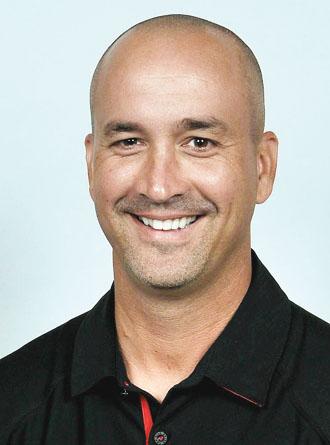
University of Georgia Associate Head Coach
I believe that addressing and training this concept was a major turning point for us during the 2010 season at Georgia. It made such a profound impact that I plan on addressing it with every team I ever coach.
Territorially we were dominant in nearly every game, but we habitually failed to produce the finishing we needed to win.
In the attacking third we lacked patience and we lacked discipline. We would press the opponent for long stretches at a time and everything would be going swimmingly. We’d work down the left side, turn around, switch fields and then try the right side, methodically probing for a worthwhile opening.
On the sidelines we could see our opponent wilting from the amount of chasing it was forced to do. We could see the opposing players growing tired in body and spirit.
We could see that their shape was coming undone and we knew a good scoring chance was just moments away.
Then, inevitably, one of our players would lose her patience and hit a low-percentage, off-balance shot from 30 yards that would result in an easy save or a goal kick and would destroy all the momentum we had been building. Or we would attempt a shot from an impossible angle that would sail wide of the post.
In effect, we were donating the ball to our opponent for no other reason than someone decided we had gone too long without shooting. It was a very frustrating stretch for us because we were settling for 0-0 ties against teams that we were categorically destroying in the run of play.
Smart players are realistic. They don’t let the opponent off the hook with attempts at goal that will never be dangerous.
How many goals have you scored from 35 yards? How many have you scored from 35 yards with your weak foot? How many have you scored from 35 yards with your weak foot when you were off balance?
If you don’t make a habit of scoring from 35 yards… if you haven’t done so in three years… maybe you should consider eliminating that choice from your menu.
You need to understand the damage you do to your team when you take unrealistic shots. You need to understand how it affects the big picture.
You can’t expect to win if you’re continually donating the ball to your opponent when you have her on the ropes. Once you understand that, you will become more discerning in your shot selection.
Another common violation of this rule can be found in unrealistic headers, particularly from crosses.
When a serve arrives in your opponent’s goal area, it arrives as nothing more than the massive potential to become a goal. Your decision upon receiving that cross determines whether or not that potential will be realized.
Too often a player, who has no realistic chance of putting sufficient power on her header, will disregard the odds and try to score anyway. Her shot is an easy grab for the goalkeeper and kills her team’s chance to create a legitimate chance.
When you arrive at the back post and that cross has you backpedaling away from the goal, you won’t score. If the cross doesn’t have much pace and you are 16 yards away from the goal, you won’t score. And as much as you scoring a goal would make me very happy, there’s a time and a place to go to Plan B.
If you don’t have a realistic chance to score, don’t bother shooting. Don’t ruin it for everyone. You’re better off keeping the ball alive so a teammate might get that realistic chance.
Instead of lobbing a soft header at the goalkeeper or trying to score from an impossible angle, knock the ball down to a teammate or to the top of the six or toward the penalty spot where it can be dangerous.
It’s not just headers; it’s everything. Regardless of your surface choice, if you’re going to take a crack at goal, make sure you have a realistic chance of scoring. It doesn’t have to be a no-brainer, automatic easy goal.
But by the same token, you shouldn’t take a shot that cannot possibly score without the help of divine intervention. Be realistic, patient and disciplined. Otherwise you’re donating the ball to your opponent and letting her off the hook.
(Note for Coaches: When we addressed this at Georgia, something remarkable happened. Our per-game shot total went down, but our goals-per-shot percentage improved dramatically. Instead of taking 27 shots and not scoring, we were taking 17 shots and scoring three times.
We kept the ball in the field of play more, and kept possession of it, which wore down our opponents. Our opponents were taking fewer goal kicks so they weren’t getting as much rest.
Their goalkeepers were handling the ball less which also took away opportunities to rest. If your team is dominating games but not getting results, this is a topic you may want to evaluate.
